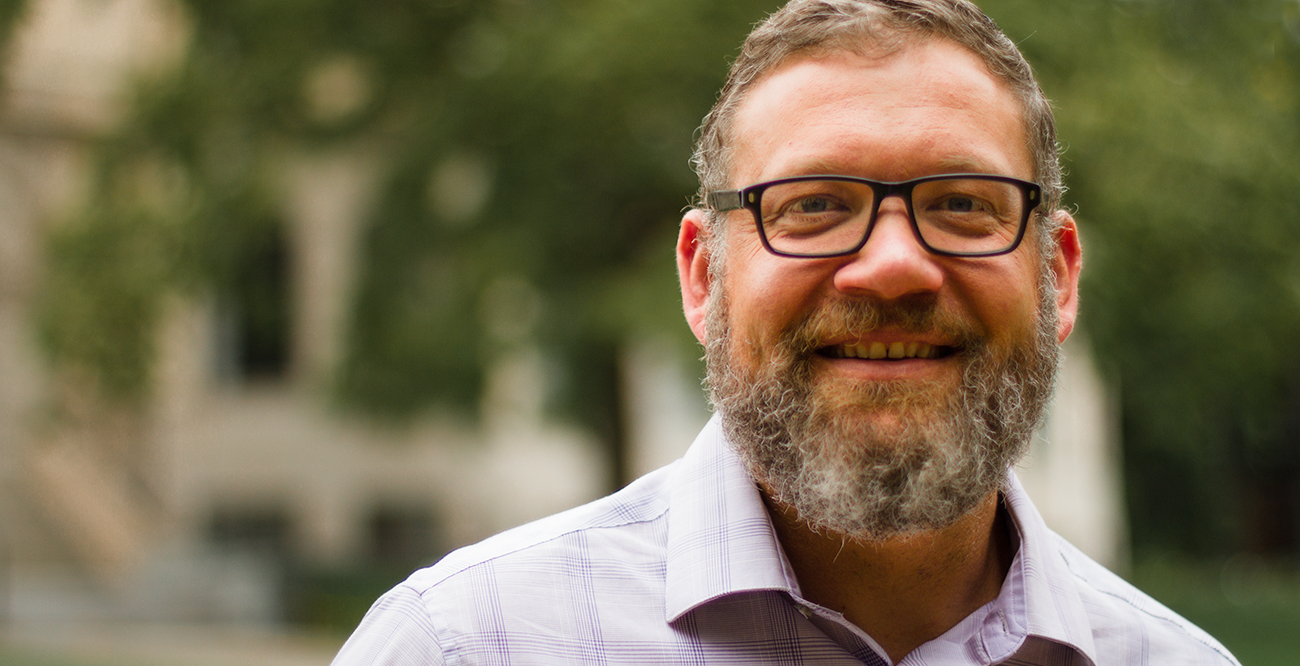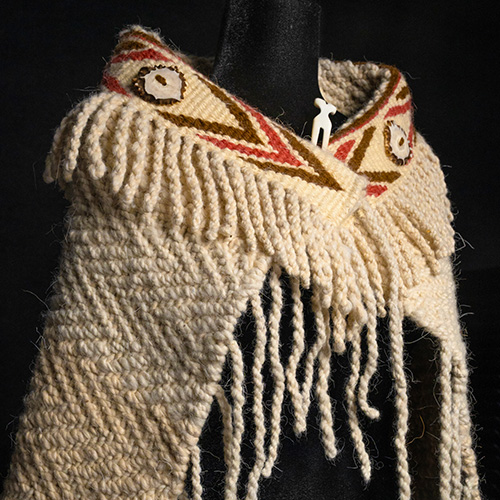The first time Steven Goodreau taught his “Plagues and Peoples” course in the UW Department of Anthropology, the Ebola virus had just hit the news. The second time, the Zika virus appeared. When he offered the course again last quarter, there seemed to be no viral crises on the horizon.
“I wondered what was going to happen this time,” recalls Goodreau, professor of anthropology. “Before the quarter started, I joked that maybe I shouldn’t teach the class.”

He did teach the course, and within the first few weeks COVID-19 emerged as a growing concern. This time the virus found its way to Seattle, which made the course unusually relevant for Goodreau and his students. “The COVID-19 outbreak became suddenly central to our course material, and the course material became central to my personal response to this pandemic,” says sophomore Lily Woodard, an archaeological sciences and English major.
In a horrible way, the course was great at putting the current situation in context.
Goodreau, a biological anthropologist, created the Plagues and Peoples course to explore the similarities between various epidemics, and our responses to them, over many centuries. The first three weeks of class are dedicated to biological aspects of disease, including the basic biology of viruses and bacteria and human immune responses. Goodreau then turns to mathematics, which helps predict the spread of disease and the potential impact of mitigating measures such as social distancing and vaccines. The last five weeks are dedicated to case studies of past epidemics, from the bubonic plague to smallpox to HIV. “The study of a real-world phenomenon like an epidemic needs all of these—biology, math, and history,” says Goodreau. “They all interact in much more interesting and subtle ways than might immediately be obvious.”
An Epidemic Emerges
At the beginning of each Plagues and Peoples class session, Goodreau devotes a few minutes to current news. On January 8, he chose a CNN article about a mysterious virus in China that was making the rest of Asia nervous. He didn’t revisit the topic again until January 22, when the number of cases in China was rising and the first US case appeared. From that point on, Goodreau became vigilant about following coronavirus updates, from media coverage to official reports from the Centers for Disease Control. Before long, he was spending about 20 minutes of each class discussing COVID-19. His goal was to show similarities between the current epidemic and past epidemics covered in class.
“In a horrible way, the course was great at putting the current situation in context,” Goodreau says. “I still taught much of the planned material, but when sharing case studies, I focused on the parts that were points of comparison to what’s happening now. I wanted the students to have the perspective that humans have been through this before, that we tend to have certain kinds of reactions, and that many of those reactions are actually harmful.”

Blame is a common response in an epidemic, Goodreau says, whether it be blaming a country or a group of people. Socioeconomic inequities also emerge. For centuries, the wealthy had the luxury of leaving cities to ride out an epidemic, while the poor were stuck in crowded, unsanitary slums. Today there are those who have the luxury of working from home and social distancing, and those who have lost jobs due to the virus or must continue to work despite the risks.
Sharing Beyond the Classroom
While the class explored these and other issues related to COVID-19, students had personal concerns as well. They worried about commuting on buses and socially distancing themselves in dorms or sororities and fraternities. They questioned what to do if someone they knew had symptoms. “There was just so much confusion and anxiety and fear,” Goodreau recalls. “I’m not an MD or a public health official or part of the University’s official response team, but from the students’ point of view I was the most knowledgeable and connected person they knew about this very confusing and scary thing. So I started getting a lot of emails from students with questions. And of course I responded to all of them, because how could I not?”
Just as Goodreau calmed his students, the students have done the same for others thanks to his course. “I’ve been able to assure my family and friends in a time when they need it most,” says Woodard. “I can discuss the potential for a vaccine, the effectiveness of wearing a mask, why fatality rates between Italy and America are so disparate, and most importantly help those around me keep their heads when I would likely have lost mine without this valuable information. I feel lucky to have been in this class.”
Goodreau feels lucky too. At the end of the quarter, students told him his class was the most meaningful educational experience they’d ever had. Several said it made them want to dedicate their lives to fighting infectious disease. As the final class session—offered online by then—came to a close, Goodreau thanked his students and reached over to press a button on his computer to end the class. “I just couldn’t press it,” he recalls. “I almost pressed it three times, and then I finally pressed it and just started crying. It was such an emotional time, and that was the moment when it came out for me.”
Though the class has ended, its impact has not. Samantha Goveia, a sophomore majoring in medical anthropology and global health, says she gained insight into not only the science of epidemics in Goodreau’s class, but also the humanity.
“This is not the time for an ‘every man for themselves’ mentality,” says Goveia. “That has never worked for people. Just look at history. One of Professor Goudreau’s quotes that really stuck with me is, ‘These things bring out the worst in people, but they also bring out the best.’ We can all do something. We are not helpless. We must be compassionate to others in these times of uncertainty.”
More Stories

A Healing Heart Returns
In February, the UW Symphony will perform a symphony that Coast Salish elder Vi Hilbert commissioned years ago to heal the world after the heartbreak of 9/11. The symphony was first performed by the Seattle Symphony in 2006.

Coast Salish Traditions are "Woven in Wool" at the Burke
A Burke Museum exhibit, co-curated by Coast Salish weavers and Burke curators, highlights the importance of weaving to Coast Salish communities.

A "gesture" to jump-start careers
To prepare students for professional success, the UW College of Arts and Sciences offers “gesture,” a mock startup company where student interns gain skills that employers seek.